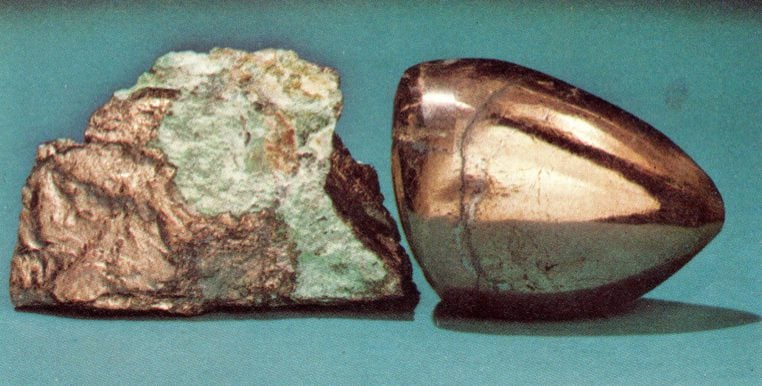Located at Group 2 and Period 4 of the periodic table is another magnetic element. This is Nickel.
First discovered and isolated by the Swedish chemist Axel Fredrik Cronstedt in the mineral niccolite in 1751.
 |
| Niccolite |
 |
| Axel Fredrik Cronstedt |
Nickel has featured in alloy for thousands of years, but it was recognized as a chemical element in its own right only in 1751. That was when Swedish chemist Baron Axel Frederic Cronstedt first isolated pure nickel from a reddish ore (mineral-containing rock) called niccolite. Niccolite got its name because it superficially resembled copper ore, though contained no actual copper. Miners who tried to extract it blamed "Old Nick" (the devil) for stealing the copper—and the name stuck. These days, you'll find nickel among the transition elements in group 10 of the periodic table. It's very like iron in some ways and very like copper in others—hardly surprising, perhaps, given that it sits midway between them in the periodic table.
Name: Nickel
Latin name: Nicculum
Electrons per shell : [2, 8, 16, 2]
Discoverer : Axel Fredrik Cronstedt
Isolator : Axel Fredrik Cronstedt
Isolator : Axel Fredrik Cronstedt
Element’s : Atomic Mass : 58.69 u
: Density: 8.908 g/cm3
: Type : Transition metal
Chemical properties :
- Unreactive element
- Flammable
- Toxic
- Corrosion resistance
- Dissolves slowly in diluted acids
- Does not react with water
- 5 isotopes : 3 of them are :
Nickel - 60 : Protons : 28
: Neutrons : 32
( Half Life : Stable )
Nickel - 61 : Protons : 28
: Neutrons : 33
: Electrons : 28
( Half Life : Stable )
Nickel - 62 : Protons : 28
: Neutrons : 34
: Electrons : 28
( Half Life: Stable )
Physical properties :
- Malleable
- Silvery-white
- Fairly good conductor of heat
- Fairly good conductor of electricity
- Shiny
- Ductile
- Magnetic
- Melting point : 1453 degrees Celsius ( 2647.4 Fahrenheit )
- Boiling point : 2913 degrees Celsius ( 5275.4 Fahrenheit )
How Nickel got its name?
Nickel got it's name from the German word 'Kupfer' , which means demon or goblin.
Uses
Most nickel production is used for alloying elements, coatings, batteries and some other
uses, such as kitchen wares, mobile phones, medical equipment, transport, buildings
power generation and jewelry.
uses, such as kitchen wares, mobile phones, medical equipment, transport, buildings
power generation and jewelry.
 |
| Batteries |
THIS IS THE END OF NICKEL
To go to homepage, click this link :
To go to Chemistry Element Page, click this link :
Thanks for visiting.
If there is any improvements needed, feel free to comment at the comment section below.
Thank you.



